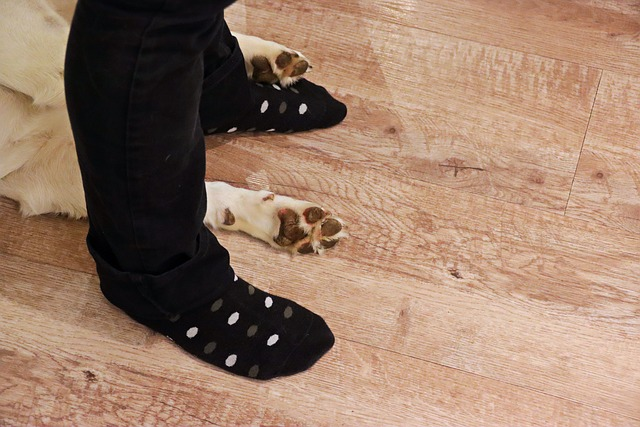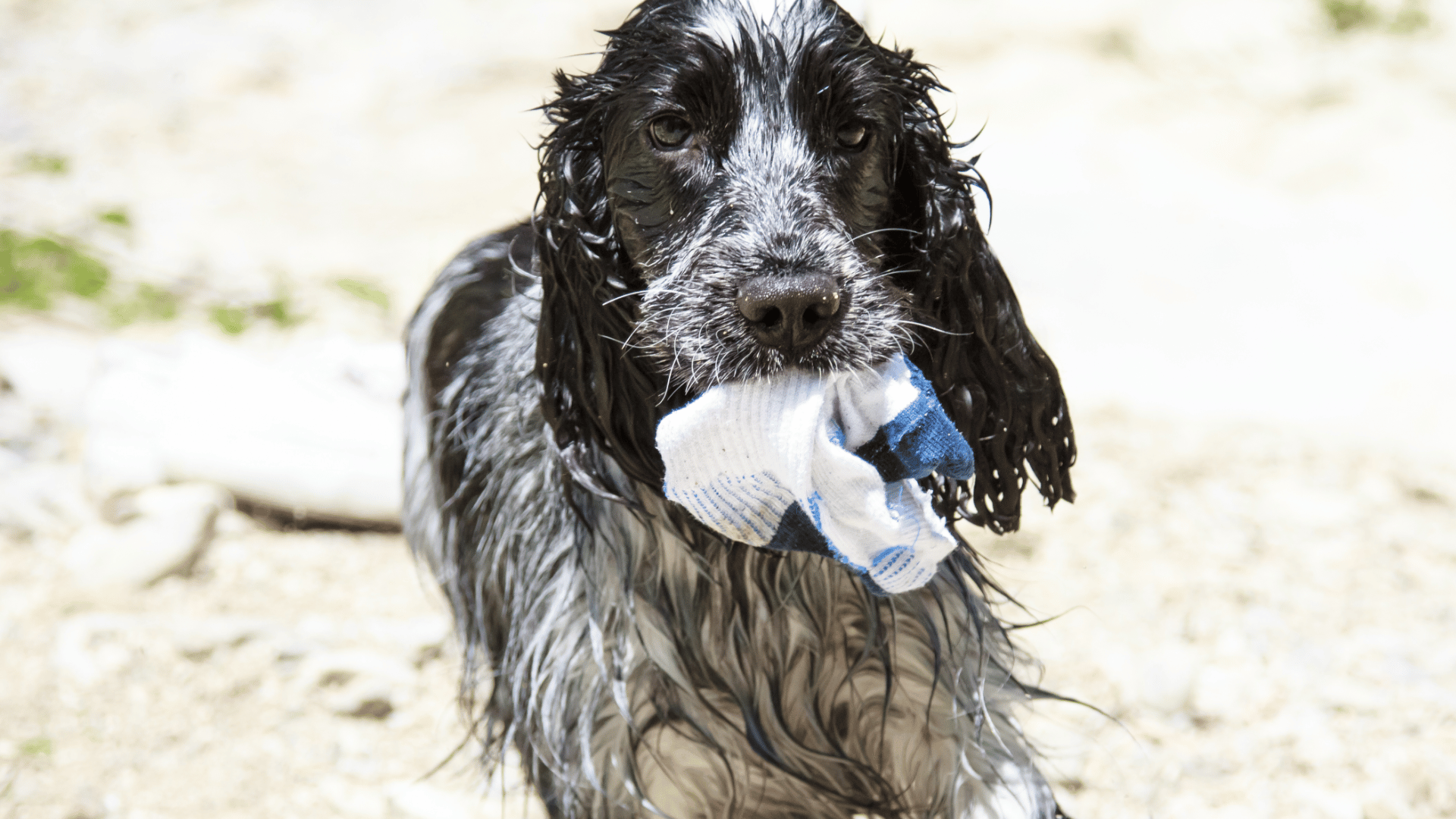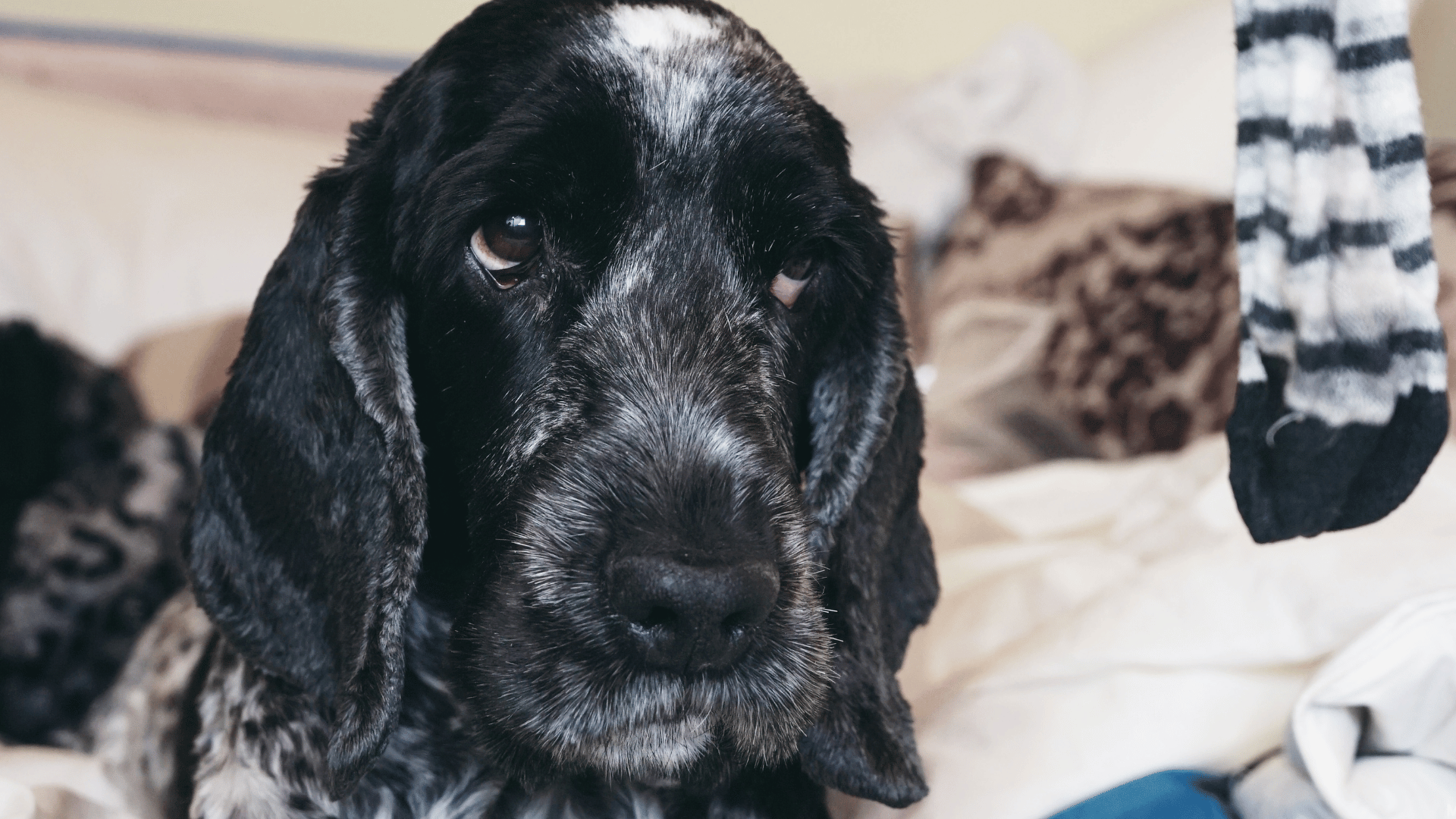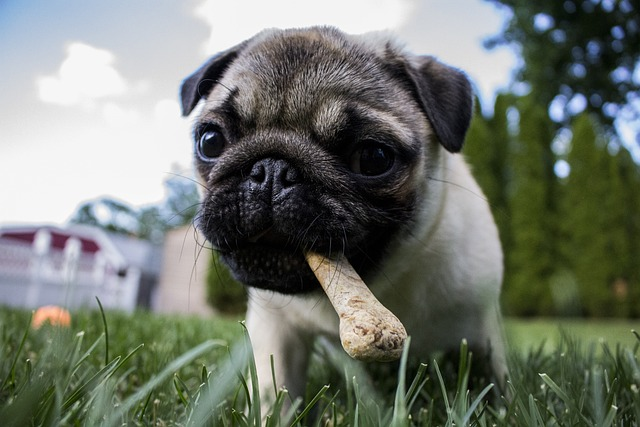
Dogs and Socks : A Reasonable Obsession
Your dog’s fascination with socks might seem like a quirky habit, but have you ever considered why they are so drawn to these garments? It's not just about the texture or chewability; there's a deeper, biological connection linked to their strong sense of smell and emotional ties. As a dog trainer, you understand how a dog's behavior often reflects their natural instincts. This reasonable obsession with socks can be seen in most dogs and other animals, including cats.
For instance, a puppy might lick or chew on socks due to anxiety, the comfort of the scent, or simply as a form of play. However, this behavior can lead to potential health risks, such as biting or swallowing parts of the socks. It's important to use positive reinforcement and training techniques to manage this behavior, ensuring both your furry friend's safety and the protection of your favorite pair of socks. Let's explore the intriguing world of canines and their sock obsession, and how owners can effectively teach their dogs to avoid this potentially harmful habit.

Understanding Dogs' Affinity for Socks
Let's delve into understanding why your furry friend has a remarkable affinity for socks, a fascination rooted deeply in their keen sense of smell and emotional connection to you. As a dog trainer, you know that dogs’ behavior often reflects their natural instincts.
Your dog's nose is a powerful tool. The pheromones you release, detected by their Jacobson's organ, are what get their tail wagging. And guess where these pheromones are concentrated? On your sweaty socks.
These socks, rich in your scent, trigger feelings of happiness and calmness in your dog. They’re not just grabbing your socks for fun; they’re craving the comfort and security your scent provides. When you’re not around, your scent on socks serves as a reminder of you, bringing them the same joy they feel when you’re home.
Moreover, dogs are naturally attracted to high-value possessions. So, when they associate your scent with value, your socks become more than just footwear. They become a treasure, a source of invaluable information about you. The scent helps them understand your age, health, and emotional state. It’s all about comfort, security, and attraction.

The Science Behind the Obsession
Delving into the science behind your dog’s sock obsession, it’s primarily their Jacobson’s organ, a chemosensory organ, that plays a key role in this behavior. This organ enables them to detect pheromones, chemical signals that provide them with vital information about you such as your age, health, and emotional state.
Your sweaty socks, rich in pheromones, are especially alluring to your pet. They associate items carrying your scent with high-value possessions. It’s not just a fun plaything for them - it’s a comfort blanket.
The comfort and security that your scent provides can't be underestimated. It’s akin to a child clinging to a favorite stuffed animal. The familiar scent provides a sense of security and reduces stress, making them feel closer to you even when you’re not around. Positive reinforcement and training techniques can help manage this behavior, ensuring your dog feels comfortable and secure without resorting to sock-stealing.

Risks of Sock Chewing Behavior
While your dog's fascination with socks might seem charming, it's important to understand the serious risks that sock chewing behavior can pose. Dogs are drawn to the familiar scent on socks and often, in their enthusiasm, may ingest them. This can lead to dangerous intestinal blockages. It's a common problem, especially in certain breeds like Labradors.
These blockages present with symptoms such as vomiting, loss of appetite, and abdominal pain. If you notice these signs in your dog, it's crucial to seek veterinary attention immediately. Delayed treatment can lead to severe complications like dehydration and even intestinal perforation.
In many cases, your dog's body won't be able to pass the sock naturally. This means that surgical intervention may become necessary. Surgery is invasive and can be stressful for both you and your pet. It's also worth noting that it can be quite expensive.
While it's endearing that your dog finds comfort in your scent, allowing sock chewing behavior is a gamble with their health. Understanding this risk can help you take steps to prevent this perilous obsession. Remember, safeguarding your socks is more than just about keeping your laundry intact, it's also about keeping your furry friend safe.
Safeguarding Your Socks
To keep your dog safe and your socks intact, it's crucial to adopt effective strategies for safeguarding your socks from canine attention. Dogs, with their keen sense of smell, love the scent of your socks. Their stealing habit is more about comfort and familiarity than mischief.
The first line of defense is to keep your socks out of paw's reach. Store them in closed drawers or bins, far from your dog's curious nose and playful paws. This simple management strategy reduces the chances of your socks becoming canine chew toys.
Next, give your dog alternatives to your socks. A variety of chew toys can serve as effective distractions. Your dog will be less likely to hunt for your socks if they've more enticing options to chew on.
Lastly, train your dog to understand and obey commands such as 'leave it'. This can discourage their sock-stealing behavior. Always supervise your dog, especially around laundry areas, to ensure they don't have access to your socks.
With these strategies in place, you can protect your socks and maintain your dog's safety.
When Your Dog Swallows a Sock
Despite your best efforts to safeguard your socks, there may be instances when your dog ends up swallowing one. This occurrence isn't just a nuisance but poses significant health risks. Swallowing socks can lead to choking or worse, gastrointestinal foreign body obstruction, a potentially fatal condition.
Your dog's playful act can quickly escalate into a medical emergency, as the sock can block the passage of food, cause dehydration, or even result in intestinal perforation. If your pet acts unusually, like vomiting or refusing to eat, it's time to seek immediate veterinary care.
Veterinarians often encounter socks during surgery for foreign body obstruction, and surgical removal can cost anywhere from $800 to $3500. This hefty expense makes it apparent that investing in pet insurance can be a wise choice. The coverage can help you manage unexpected costs related to your dog's sock-swallowing incident.
It's essential to understand that while a sock may just be an item of clothing to you, it can be a dangerous temptation for your dog. So, always stay vigilant and prioritize your pet's health.
Training Dogs to Avoid Socks
Training your dog to avoid socks doesn't have to be a daunting task, especially when you use positive reinforcement techniques. This training technique involves rewarding good behavior, rather than punishing the bad. So, when your sock thief turns away from those irresistible foot coverings, lavish them with praise and a treat.
Consistency is key. Regularly reinforcing commands like 'leave it' or 'drop it' can greatly reduce your dog's destructive behavior over time. If your dog is eyeing a sock, use these commands to redirect their attention. When they comply, reward them to reinforce this good behavior.
Remember, your dog's obsession with socks might be due to separation anxiety. In your absence, your scent on socks provides comfort. To help alleviate this, spend quality time with your furry friend, engaging in interactive play sessions.
Always supervise your dog, especially when socks are within reach. If they show interest in your socks, immediately intervene and replace them with appropriate toys. Over time, they'll learn socks are off-limits.
Training a dog to avoid socks takes patience and consistency, but with positive reinforcement, you'll soon curb your dog's sock-stealing tendencies.

Alternative Chew Toys for Dogs
Offering your dog a variety of alternative chew toys can effectively curb their sock-chewing habits while providing them with hours of entertainment. Durable rubber chew toys are a great way to redirect behavior. They're tough, long-lasting, and will give your dog something other than your socks to focus on.
Interactive toys are another fantastic option. These ingenious playthings can dispense treats, keeping your furry friend both mentally and physically engaged. They're far more interesting than a sock, and they'll keep your dog's attention for longer.
Don't forget about natural bones or antlers. They're safe alternatives to socks and other household items your dog might be tempted to chew. Plus, they're brilliant for promoting dental health and satisfying your dog's natural chewing instincts.
You can also consider squeaky toys or plush toys with reinforced stitching. They're playful, safe, and they give your dog a sense of accomplishment when they make them squeak.
Lastly, consider frozen treats or stuffed Kongs. They're a cool, rewarding chew experience that will keep your dog happily occupied. Remember, the key is variety and ensuring the alternatives are genuinely appealing.

Positive Reinforcement Techniques
When it comes to curbing your dog's sock obsession, positive reinforcement techniques can really pave the way. These methods involve rewarding your furry friend's desired behaviors to encourage their repetition. You'll find that using treats, praise, or toys as rewards can effectively reinforce positive behaviors in your dog.
Consistency is essential in this process. You must deliver rewards promptly and regularly to help your dog understand what's expected of them. It's about creating a clear connection between good behavior and a pleasant outcome. So, each time your dog resists the temptation to snatch a sock, promptly reward them with a treat or praise.
What makes positive reinforcement so effective is the bond it forms between you and your pet. This bond is built on trust and cooperation, making your dog more likely to respond to your commands, not out of fear, but out of respect and love for you.
Addressing Your Dog's Separation Anxiety
While positive reinforcement can curb your dog's sock obsession, it's also important to consider that this behavior might be a sign of separation anxiety. The urge to grab and chew on socks might be your furry friend's way of coping with the stress and discomfort of being left alone. This manifestation of your dog's behavior requires understanding and careful handling.
Separation anxiety can lead your dog to seek out comfort items, like your socks, due to their familiar scent. These items offer a sense of security and closeness to you, temporarily relieving anxiety. It's important, however, not to rely solely on these items for comfort.
Training is a critical component in managing and mitigating separation anxiety. Gradual desensitization techniques, such as short periods of separation building up to longer durations, can help your dog become more comfortable with being alone.
If your dog's separation anxiety persists, it might be beneficial to consult with a professional trainer. They can provide tailored strategies and techniques based on your dog's specific needs and behavior. Remember, understanding and patience are key in helping your dog navigate through separation anxiety.
Enhancing Dog-Human Bond Beyond Socks
In order to foster a deeper bond with your dog beyond the sock obsession, it's vital to understand and correctly interpret their body language. Recognizing a wagging tail as happiness or flattened ears as fear is the first step in effective communication. This understanding of canine behavior allows you to respond appropriately, strengthening the dog-human bond.
Encourage mental stimulation by introducing new toys or activities. This keeps your furry friend engaged, preventing boredom and reducing the likelihood of them turning to socks for entertainment.
Incentivize good behavior with positive reinforcement. Offering high-value treats or verbal praise when your pooch behaves well, reinforces your bond and makes the learning process enjoyable. Remember, it's not about punishment but about teaching what's acceptable.
Lastly, never overlook their need for physical exercise. Regular walks or play sessions aren't just for fitness but also for bonding. A well-exercised dog is a happy dog and a happy dog makes for a stronger bond.
Conclusion
So, it's clear your dog's sock obsession isn't just cute, it's rooted in their love for you. But remember, it's not without risks. Keep socks out of reach and provide alternative chew toys.
Use positive reinforcement to encourage good behavior and address any separation anxiety. By understanding and managing this obsession, you can keep your pup safe and happy, and strengthen your bond - no socks required!
Socks You'll Love
Athletic Silky Dry Ankle Tab 10 Pairs Socks
68% Nylon, 29% Polyester, 3% Spandex Machine Wash Cold / Dry at Low Temperature Made with best nylon, polyester and spandex materials that make yo...
View full detailsAthletic Cushion Solid Crew 8 Pairs Socks
98% Polyester, 2% Spandex Machine Wash Cold / Dry at Medium Temperature Run Dry Moisture Control manages moisture and keeps your feet fresh Arch S...
View full detailsStandard No Show 10 Pairs Socks
98% Polyester, 2% Spandex Machine Wash Cold / Dry at?Medium Temperature Made with the best cotton, polyester, and spandex materials that make your...
View full detailsAthletic Silky Dry Ankle Tab 3 Pairs Pickleball Socks
68% Nylon, 29% Polyester, 3% Spandex Machine Wash Moisture Wicking Performance - premium materials and specially designed Mesh Ventilation reduce...
View full detailsAthletic Cushion Stripe Crew 8 Pairs Socks
98% Polyester, 2% Spandex Run Dry Moisture Control manages moisture and keeps your feet fresh Arch Support keeps the feet balanced and stable ove...
View full details


![running performance heel tab ankle socks#color_[tie-dye]-carmine/lime-(4-pairs)](http://monfootsocks.com/cdn/shop/products/tiedye__1_512x512.jpg?v=1693551260)





![running performance heel tab ankle socks#color_[tie-dye]-carmine/lime-(4-pairs)](http://monfootsocks.com/cdn/shop/products/usa05_7_512x512.jpg?v=1693551054)
